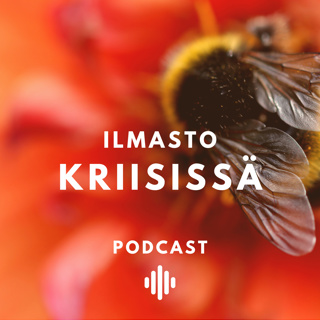
Miami’s Sinking Skyline
Meteorology Matters reviews the key findings from several recent sources regarding the subsidence of buildings along the Miami coastline. The research, primarily based on satellite-based Interferometric Synthetic Aperture Radar (InSAR) observations, identifies alarming trends in ground settlement potentially linked to construction practices and geological factors.
31 Joulu 202414min

Jimmy Carter's Environmental Legacy
Jimmy Carter's Environmental Legacy: meteorology Matters provides a comprehensive overview of President Jimmy Carter's environmental legacy, highlighting his commitment to conservation, energy efficiency, and renewable energy, while also acknowledging the complexities and criticisms surrounding his approach.
30 Joulu 202413min

January Cold Snap: Accuracy, Limits, and Looming Winter Weather
January Cold Snap: Accuracy, Limits, and the Looming Winter WeatherMeteorology Matters analyzes recent weather reporting regarding forecast accuracy, the intrinsic limits of predictability, and the potential for a severe cold snap in early to mid January 2025.
29 Joulu 202414min

US Military Christmas Tradition History: NORAD Tracks Santa and Operation Christmas Drop
Briefing Document: Holiday Traditions with a Military TwistThis document reviews two unique holiday traditions involving the US military: NORAD Tracks Santa and Operation Christmas Drop.NORAD Tracks SantaOrigin: The tradition began in 1955 when a Sears advertisement mistakenly printed the Continental Air Defense Command (CONAD) hotline number as Santa's phone number. Colonel Harry Shoup, the commander on duty, received calls from children and, rather than dismissing them, decided to provide updates on Santa's location.Operation Christmas DropOrigin: Operation Christmas Drop started in 1952 when a WB-29 aircrew, seeing islanders waving from Kapingamarangi, decided to drop a bundle of supplies attached to a parachute.
25 Joulu 202416min

The Long Road to Recovery: How Hurricanes Helene and Milton Continue to Impact Tampa Bay Residents in December 2024
The Long Road to Recovery: How Hurricanes Helene and Milton Continue to Impact Tampa Bay ResidentsMeteorology Matters examines the ongoing challenges faced by residents in the Tampa Bay area in the wake of Hurricanes Helene and Milton. Even in December 2024 area residents are dealing with hurdles months after the hurricanes, we are focusing on the struggles residents are encountering with FEMA, housing instability, and supply shortages.Key Themes:FEMA's 50% Rule and Damage Assessment InconsistenciesHousing Instability for RentersSupply Shortages and Extended DelaysFinancial and Emotional Strain
24 Joulu 202416min

Christmas 2024 Travel Briefing: Weather Impacts and White Christmas Predictions
Christmas 2024 Travel Briefing: Weather Impacts and White Christmas PredictionsThis briefing summarizes key weather information for the Christmas 2024 holiday period, drawing from several weather forecasts and news articles.Main Themes:Unsettled weather leading up to Christmas: Many regions will experience rain, snow, and potentially disruptive weather in the days preceding Christmas.Warmer temperatures for many on Christmas Day: A warming trend is expected across much of the US, bringing above-average temperatures and reducing the likelihood of snow in many areas.Limited White Christmas potential: While higher elevations in the West and areas near the Canadian border have the best chances, widespread snow cover on Christmas morning is unlikely across the contiguous US.Travel disruptions possible: Travelers should anticipate potential delays due to weather, especially in the days leading up to Christmas.
23 Joulu 202411min

Miami and Tampa: High Risk to Climate Change, Rising Sea Level
Meteorology Matters examines Miami and Tampa's vulnerability to hurricanes and climate change. Miami, despite its booming population and development, faces significant climate risks, including rising sea levels and increased flooding, yet many residents remain, prioritizing lifestyle over potential dangers. Tampa, similarly situated in a low-lying area, presents a high-risk scenario due to its rapid growth and the potential for catastrophic storm surge, with the upcoming Hurricane Milton posing an imminent threat. Both cities highlight the complex interplay between economic growth, environmental risks, and individual choices in the face of climate change. Experts express serious concern about the preparedness of both cities for extreme weather events.
17 Joulu 202422min

Walkable Cities Good for Earth While Americans Prefer Suburbia
Meteorology Matters examines the environmental impact of suburban sprawl, contrasting it with denser, more walkable urban neighborhoods. We explore the trade-offs between walkability, affordability, and living space, highlighting public preference for sprawling suburbs despite their higher carbon footprint. We look at the effects of suburban development on natural habitats, noting both habitat loss and surprising animal adaptations. Finally we examine strategies to reduce the climate footprint of suburban areas, suggesting policy changes, technological upgrades in homes and transportation, and individual actions to mitigate emissions.
16 Joulu 202424min



















